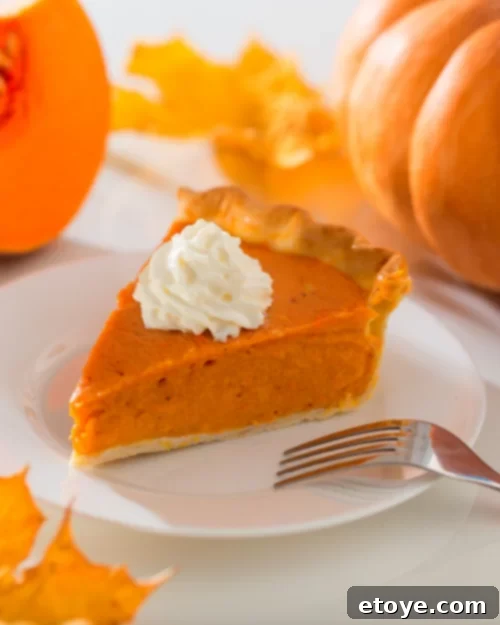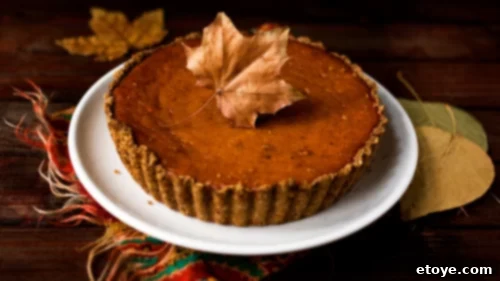The Pumpkin Paradox: From Savory Staple to Sweet Sensation & Superfood Status
For many, the pumpkin evokes images of crisp autumn days, cozy gatherings, and the comforting aroma of spiced pies. Yet, this iconic gourd holds a fascinating duality, sparking curiosity and even mild bewilderment across cultures. As an American, the idea of pumpkin as a decadent dessert item, particularly in pie form, is as ingrained as Thanksgiving itself. However, for friends Down Under, like my Aussie acquaintance, pumpkin is unequivocally a vegetable—a savory side dish, perhaps roasted or mashed, but rarely venturing into the realm of sweets. This striking contrast begs a compelling question: How did this humble, ancient gourd evolve into such a beloved and versatile staple, especially in its journey to becoming the quintessential autumn dessert?
Beyond its culinary versatility, the pumpkin also boasts an impressive nutritional profile, often overshadowed by its sweet applications. Join us as we delve into the rich history of the pumpkin, uncover the remarkable health benefits it offers, and celebrate its status as a true superfood, ready to be enjoyed in countless delicious ways.

A Journey Through Time: The Ancient Origins and Culinary Evolution of Pumpkin
The story of the pumpkin begins not in colonial America, but deep in the heart of Central America, approximately 7,500 years ago. Early pumpkins were far removed from the sweet, plump varieties we know today. These ancient ancestors were small, hard-skinned, and possessed a notably bitter flavor. Initially, pre-Columbian natives cultivated them primarily for their robust flesh, which, while not offering substantial nutritional value in its raw form, served practical purposes. Over millennia, through selective cultivation and adaptation, these early gourds gradually transformed, eventually becoming one of the first crops deliberately grown for human consumption in North America.

From Indigenous Sustenance to Colonial Cuisine
When European settlers arrived in the New World, they quickly adopted pumpkins from Native American tribes, who had long mastered their cultivation and preparation. Early colonial recipes reflect this adoption, often using pumpkins in hearty, savory dishes. John Josselyn’s “New England Rarities Discovered,” published in the early 1670s, featured some of the first recorded American pumpkin recipes. These were typically served as a savory side dish, akin to mashed sweet potatoes, highlighting the pumpkin’s earthy flavors rather than its potential for sweetness. Settlers discovered the pumpkin’s versatility, using it not only for food but also for brewing ale and even as a source of animal feed during lean times.
The Birth of Pumpkin Pie: A Sweet Transformation
The journey of pumpkin from a savory staple to a beloved dessert began to take shape in the late 17th and early 18th centuries. English writer Hannah Woolley’s “Gentlewoman’s Companion,” also from the 1670s, introduced recipes that remarkably resembled what would become modern pumpkin pie. Her descriptions included a pie filled with alternating layers of pumpkin and apple, seasoned generously with aromatic spices like rosemary, sweet marjoram, and thyme. However, these early “pies” often lacked the familiar crust; many innovative New England recipes involved hollowing out a pumpkin, filling it with sweetened, spiced milk, and then roasting it directly in a fire or hot ashes.
As culinary traditions evolved, so did the preparation of pumpkin dishes. By the early 18th century, a growing appreciation for crusts and more refined baking techniques propelled pumpkin pie onto holiday dinner tables. It gradually cemented its place, particularly as a centerpiece of Thanksgiving feasts, symbolizing the harvest season and culinary ingenuity. This transformation wasn’t merely about taste; it was about cultural integration, turning a native crop into an iconic symbol of American autumn celebrations and a testament to the pumpkin’s remarkable adaptability.

Beyond the Dessert: Unveiling the Remarkable Health Benefits of Pumpkin
While often associated with indulgent pastries and sweet lattes, the pumpkin, in its purest form, is a nutritional powerhouse. It’s a low-calorie, nutrient-dense superfood packed with vitamins, minerals, and antioxidants that contribute significantly to overall health and well-being. Let’s explore the incredible array of health benefits often overlooked when we focus solely on its dessert applications.
Beta Carotene: Your Vision, Skin, and Immune System Champion

Like its vibrant orange cousins carrots and sweet potatoes, pumpkins are an exceptional source of beta carotene. This powerful antioxidant is a precursor to Vitamin A, meaning our bodies efficiently convert it into this essential vitamin. Incredibly, just one cup of cooked pumpkin can provide over 200% of your recommended daily intake of Vitamin A!
Vitamin A is crucial for numerous bodily functions. It’s renowned for enhancing eyesight, improving visual clarity, and helping us adapt to low-light conditions, preventing night blindness. Beyond vision, Vitamin A plays a vital role in bolstering the immune system, aiding in the fight against infections and promoting robust reproductive health. It also ensures the optimal functioning of vital organs, including the heart, lungs, and kidneys. Furthermore, the natural Vitamin A derived from beta carotene is linked to a lowered risk of certain cancers, such as lung and prostate cancer, proving far more effective than synthetic supplements. Beta carotene also acts as a potent anti-inflammatory agent, contributing to healthy, glowing skin and overall cellular well-being.
Potassium: The Silent Guardian of Heart and Bone Health

The rich, earthy orange hue of pumpkins isn’t just visually appealing; it’s a clear indicator of their high potassium content. Potassium, an essential electrolyte, is fundamental for maintaining proper fluid balance and nerve signals in the body. It plays a critical role in blood pressure regulation, helping to counteract the effects of sodium and relax blood vessel walls. Regular consumption of potassium-rich foods like pumpkin can significantly lower your risk of hypertension, stroke, and kidney stones. Emerging research also suggests that adequate potassium intake may contribute to increased bone density, thereby enhancing overall bone health and reducing the risk of osteoporosis.
Bonus Tip: Don’t discard those pumpkin seeds! Unsalted pumpkin seeds are miniature powerhouses, brimming with minerals like magnesium, zinc, and healthy plant sterols. These components work synergistically to raise HDL levels (the “good” cholesterol) and further contribute to fighting hypertension, making them an excellent heart-healthy snack.
Tryptophan: Nurturing Your Mood and Promoting Restful Sleep

Another incredible nutrient found in pumpkin seeds is tryptophan. This essential amino acid is a precursor to serotonin, a crucial neurotransmitter responsible for regulating mood, appetite, and sleep. Serotonin helps induce feelings of calmness and well-being, effectively boosting your mood and reducing symptoms of anxiety. Furthermore, serotonin is converted into melatonin, the hormone that governs our sleep-wake cycles, making tryptophan-rich pumpkin seeds a natural aid for promoting restful, quality sleep. Incorporating these seeds into your diet can be a delicious way to support your mental health and ensure a good night’s rest.
Fiber: The Foundation for Digestive Harmony and Heart Health

Pumpkins are remarkably high in dietary fiber while being low in calories, making them an excellent choice for weight management and satiety. Fiber is celebrated for its role in promoting digestive health, aiding in regular bowel movements, and preventing constipation. But its benefits extend far beyond the gut. The soluble fiber in pumpkin can help lower LDL (bad) cholesterol levels, significantly improving heart health. It also helps regulate blood sugar, preventing sharp spikes and crashes, which is particularly beneficial for managing and preventing type 2 diabetes. This combined with pumpkin’s impressive Vitamin A and potassium content makes it a true powerhouse of heart-healthy and gut-friendly nutrients.
Vitamin C, Vitamin E, Iron & Folate: Boosting Your Immune Resilience

Rounding out its impressive nutritional profile, pumpkin is also a rich source of other essential vitamins and minerals crucial for a robust immune system. Vitamin C is a powerful antioxidant that supports cellular protection and the production of white blood cells, which are vital for fighting off infections. Vitamin E, another potent antioxidant, works to protect cells from damage and supports immune function. Iron is critical for oxygen transport and energy production, ensuring your immune cells have the energy they need to perform their duties. Folate (Vitamin B9) is essential for cell division and DNA synthesis, processes vital for the rapid production of immune cells. Together, these nutrients equip your body with everything it needs to boost its defenses, promote speedy healing of wounds, and maintain overall health, especially during colder seasons.
Embracing Pumpkin in Your Kitchen: Versatile Culinary Delights
Given its incredible history and diverse nutritional benefits, it’s clear that pumpkin deserves a place in your diet far beyond just holiday desserts. Its mild, sweet, and earthy flavor makes it incredibly versatile, suitable for both sweet and savory preparations. Whether you’re using fresh pumpkin, canned pumpkin puree, or pumpkin seeds, there are countless delicious ways to incorporate this superfood into your meals.
Savory Pumpkin Inspirations
- Roasted Pumpkin: A simple yet incredibly flavorful side dish. Cubed pumpkin tossed with olive oil, salt, pepper, and herbs like rosemary or sage, then roasted until tender and caramelized.
- Creamy Pumpkin Soups & Stews: Pureed pumpkin creates a velvety base for comforting soups, often enhanced with ginger, coconut milk, or a touch of curry spice. It also adds body and nutrients to hearty stews.
- Pumpkin Mashed Potatoes: Blend cooked pumpkin puree into your mashed potatoes for added color, flavor, and a nutritional boost.
- Pumpkin Pasta Sauces: A creamy pumpkin sauce can elevate pasta dishes, offering a seasonal twist to your weeknight meals.
- Pumpkin Chili: Add pumpkin puree or chunks of pumpkin to your favorite chili recipe for a unique depth of flavor and texture.
- Pan-Fried Pumpkin Gnocchi with Brown Butter & Sage: A sophisticated dish combining pumpkin’s earthiness with rich butter and aromatic sage.
Sweet Pumpkin Sensations
- Pumpkin Pie (Naturally!): The classic dessert remains a timeless favorite, celebrating autumn flavors.
- Pumpkin Breads & Muffins: Moist and fragrant, these baked goods are perfect for breakfast or a snack.
- Pumpkin Smoothies: Blend pumpkin puree with banana, yogurt, spices, and a touch of maple syrup for a nutritious and delicious drink.
- Pumpkin Oatmeal or Yogurt Parfaits: Stir pumpkin puree into your morning oatmeal or layer it into yogurt parfaits with granola for a healthy start to the day.
- Sweet Pumpkin Fried Wontons: An adventurous and delightful dessert that showcases pumpkin’s adaptability in sweet applications.
The Power of Pumpkin Seeds
Don’t forget the seeds! Roasted pumpkin seeds, often called ‘pepitas,’ are an excellent source of protein, healthy fats, fiber, and various minerals. They make a fantastic:
- Snack: Lightly salted or spiced for a crunchy treat.
- Salad Topping: Add texture and nutrition to any salad.
- Granola Ingredient: Incorporate them into homemade granola for extra crunch.
- Roasted Pumpkin Seed Recipe: A simple guide to preparing perfectly crunchy pepitas at home.
Ready to Explore More Pumpkin Delights?
Whether you’re new to the world of pumpkin cuisine or a seasoned enthusiast, there’s always a new way to enjoy this incredible fruit. From savory main courses to delectable desserts, and nourishing snacks, pumpkin offers a wealth of opportunities to enrich your diet and delight your taste buds. We encourage you to experiment and discover your favorite pumpkin preparations!
Check out some of these amazing pumpkin recipes to get started on your culinary journey:
- Roasted Pumpkin Recipe
- Roasted Pumpkin Seed Recipe
- Pan-Fried Pumpkin Gnocchi with Brown Butter & Sage Recipe
- Pumpkin Mashed Potatoes Recipe
- Sweet Pumpkin Fried Wonton Desserts
- Leftover Turkey in Pumpkin Chili
